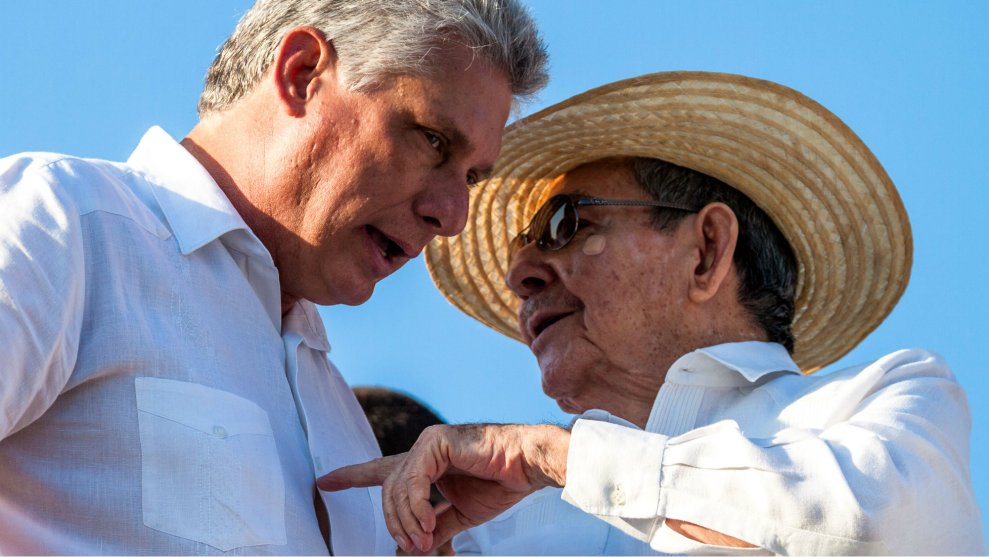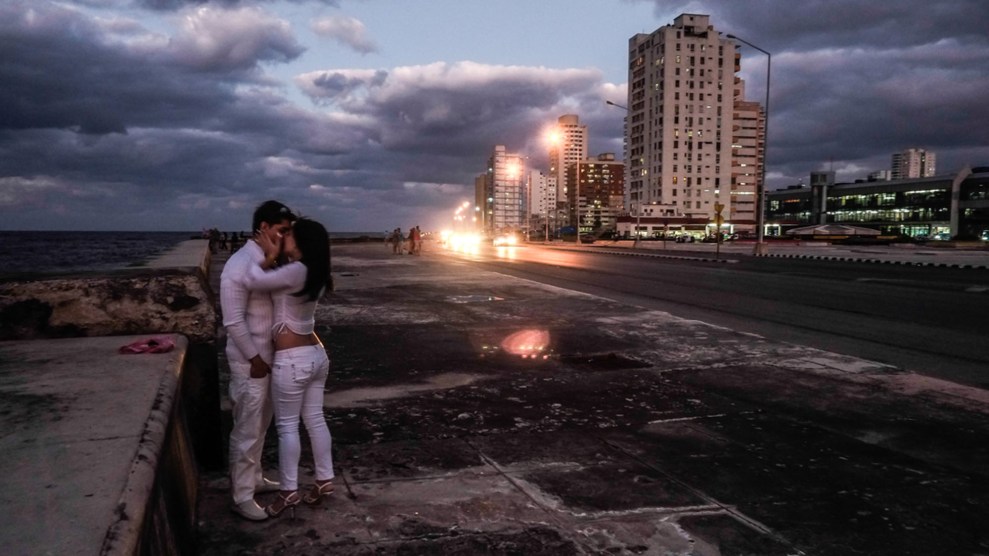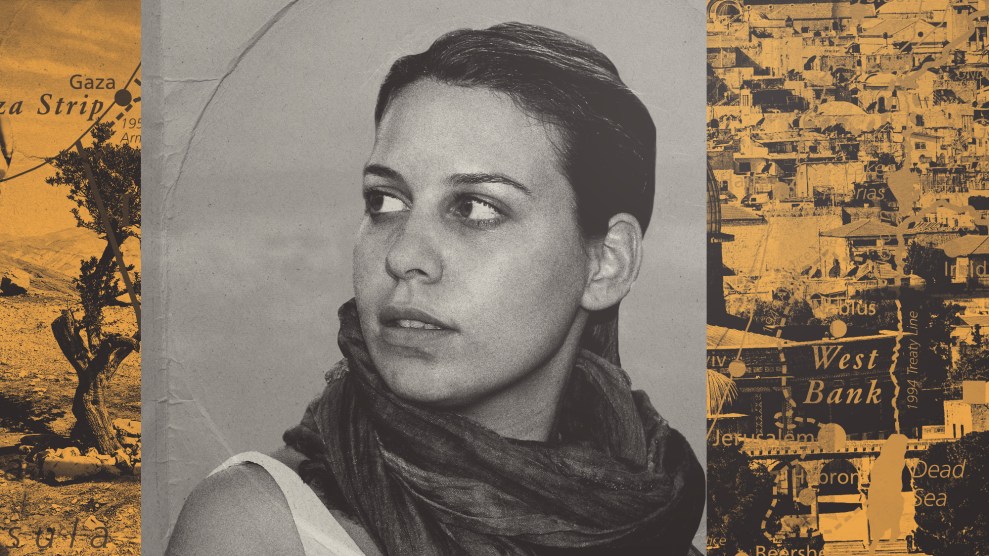Havana Youth, the debut photobook by Washington, DC–based photographer Greg Kahn, shines a light on the new Havana—feisty, sexy, alive, and evolving. It’s a stark contrast to the place stuck in time, as so many Americans have come to know Cuba. Kahn reveals a vibrant city living in and for the moment.
Needless to say, with Kahn’s book, you’re not getting the same well-trodden images of vintage American cars, women hanging out of colorful windows, and old men rolling cigars. His luscious images dismiss those stereotypes and instead put a new, young Cuba on full display. Kahn’s Havana Youth, published by Yoffy Press, focuses on a generation whose world has been infused with American and European culture seeping through technological cracks—like MP3s of the latest American music sold on thumbdrives.
“When I was talking to these people,” Kahn tells Mother Jones, “they were so sick of this idea of what people perceived Cuba to be, with the old Cuban clothing, the cigars. This generation doesn’t have the attachment to that. When I showed them images, they were like, ‘You get it. You’re not photographing us like we’re in a fishbowl. This feels like it comes from us. This feels like who we are.'”
You might say the project found Kahn. While on a trip reporting on changes in Cuba in 2012, a few years before former President Barack Obama restored diplomatic relations with the island, he followed the sound of loud bass rumbling through the streets. It led him to a concert in a plaza.
“There were throngs of people dancing and raving, just having a good time. It was all music I recognized, music that was popular at the time in the US. That’s where it dawned on me that the generation adapting to the new regulations was going to have the country evolve in a direction they want,” he says. Kahn thought, “‘That’s the project I can dive into, beyond the topical news coverage of the day.'”
In six trips made over four years, Kahn’s access to the youth culture got deeper and deeper. “It was really just me going back to high school, trying to fit in with the cool kids, allow them to let me hang around,” he says. “I just wanted them to show me what their life was like versus having a preconceived idea of what I wanted to see.”
Kahn’s photos focus on musicians, dancers, and other artists. He brings you into underground nightclubs and impromptu street corner hangouts. His subjects are typically Cubans born after 1989, those who have only known a time after the USSR dissolved and left the Caribbean nation with little resources and a powerful, growth-crippling, US-led economic embargo. The result is a sharp mix of in-the-moment documentary photos and strong portraits. It helps not just to give you a sense of the place (Havana), but also of the people (youth).
“I just wanted to see how they felt and what they thought,” he says. “It took me on so many different turns. I didn’t think about fashion when I started. I really was thinking about music and art, then another door would open up, and then another.”
Kahn writes in a caption to one of his photos that young Cubans are “mixing and matching to their own taste. They are grasping whatever they have access to in a collective effort to keep pace with international trends and establish their own identity. The once evolutionary process for cultural identity has jolted like the slip-strike of a tectonic plate.”
“I found myself seeing so many different sides and facets of this younger generation and seeing them really exploring avenues that weren’t open before and making something their own,” Kahn said. “I just let them lead the way.”
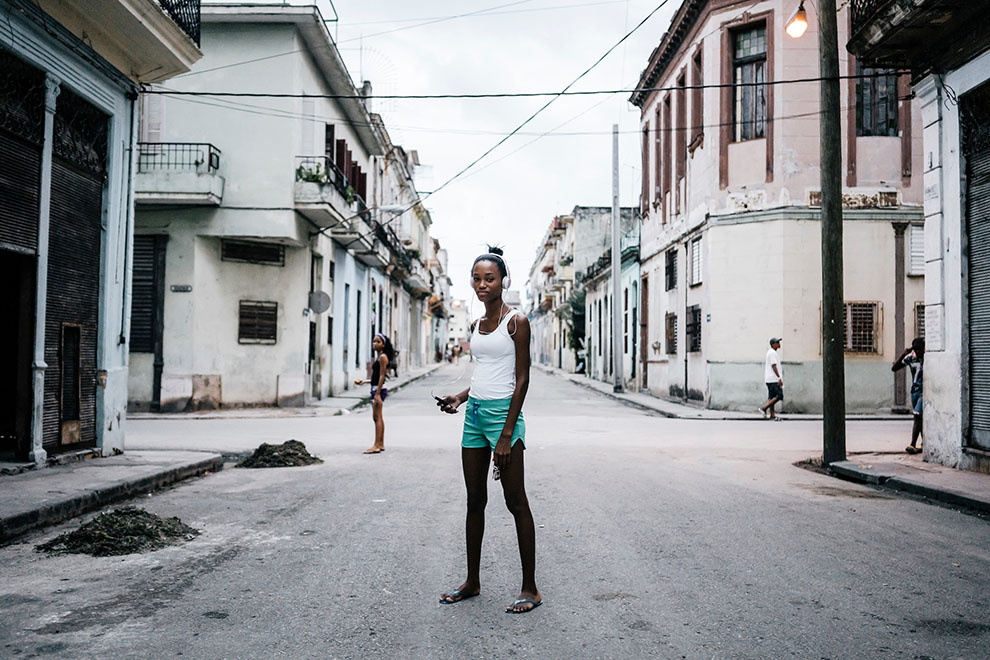
Anna Marie Mesa, 16, listens to music on her smartphone in Centro Havana. Technology is leapfrogging the infrastructure in Cuba, where citizens went from landlines to smartphones in a matter of months.

Paula Fernandez, 25, a member of female electronic DJ duo Pauza, spins at La Romana, a club in Havana. The trailblazing pair have been featured on the covers of magazines in Cuba and have received sponsorship from Red Bull. Pauza deviates from the more typical pop music and reggaeton DJs in Havana, instead playing deep house, techno, and Afro-Cuban throwback sounds. But working in a country where downloading a single song from the internet can take 10-20 minutes makes it difficult to keep up with the latest trends.
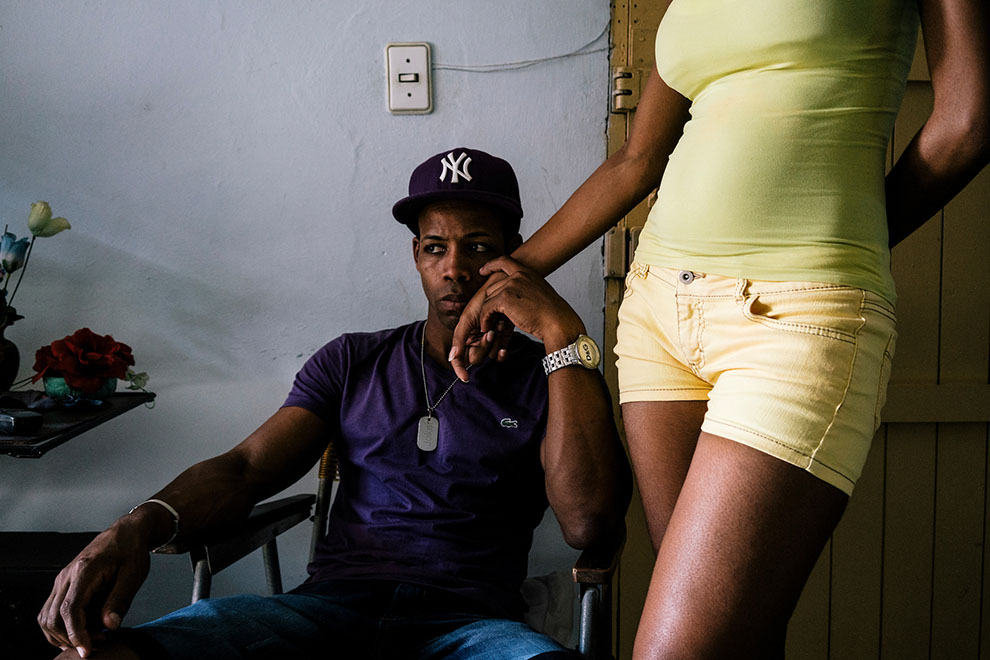
Yosmel Azcuy, 28, a professional break dancer, holds the hand of his wife, Guirmaray Silva, 29, as they wait for the electricity to come back on in their apartment in Havana. These power outages can occur weekly because of a crumbling infrastructure.
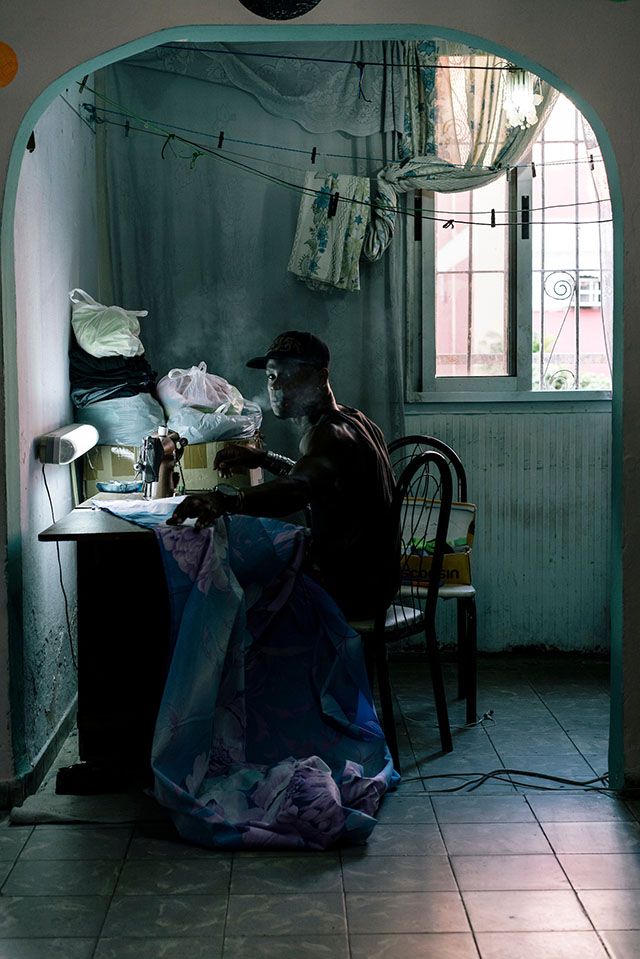
Pompi, 26, a self-taught tailor, sews together fabric for outfits for his dance company, Havana Queens. Pompi has family that lives in Germany and his wife’s family is in Miami, but he chooses to stay in Cuba. He wants to be involved in the conversation on the future of his island nation.

Break dancers warm up for an exhibition dance battle in front of Catedral Del Picadillo, a multipurpose center in the Havana neighborhood of Jaimanitas. Break dancing in Cuba goes back to the early ’80s, the same time it rose to prominence in the United States. But in the late ’80s through the early ’00s, the movement all but disappeared—the result of Cuba being disconnected from international culture and media. Now, break dancing is back and gaining momentum with the new music and style emerging in Havana. And now, with wifi connections across Havana, YouTube videos and movies of dance battles are being watched and downloaded regularly.
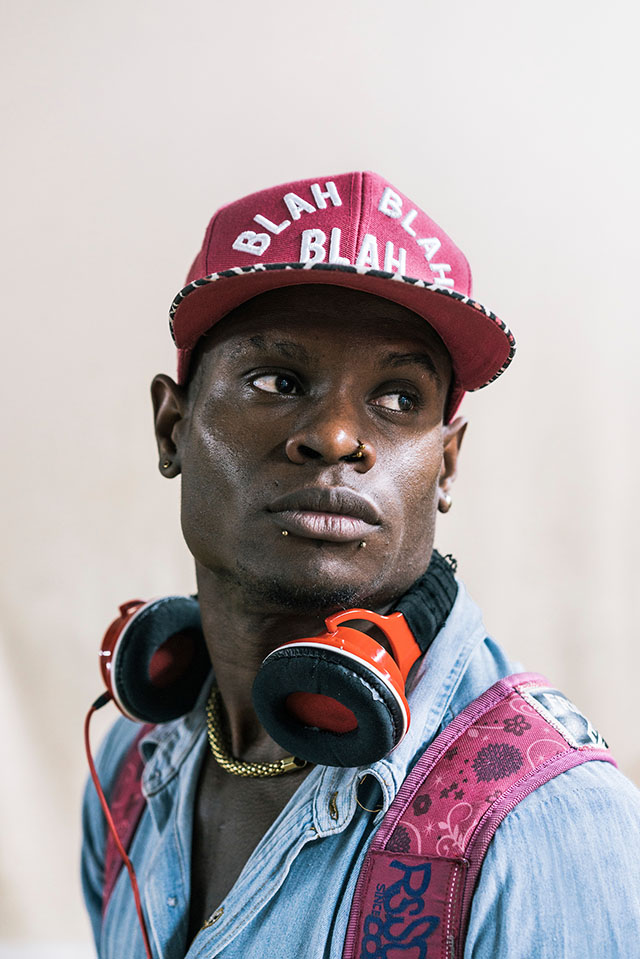
Pompi

A couple kisses during the opening ceremonies of the Caribe Games, the University of Havana’s annual sporting competition where teams from different departments compete in athletic competitions.
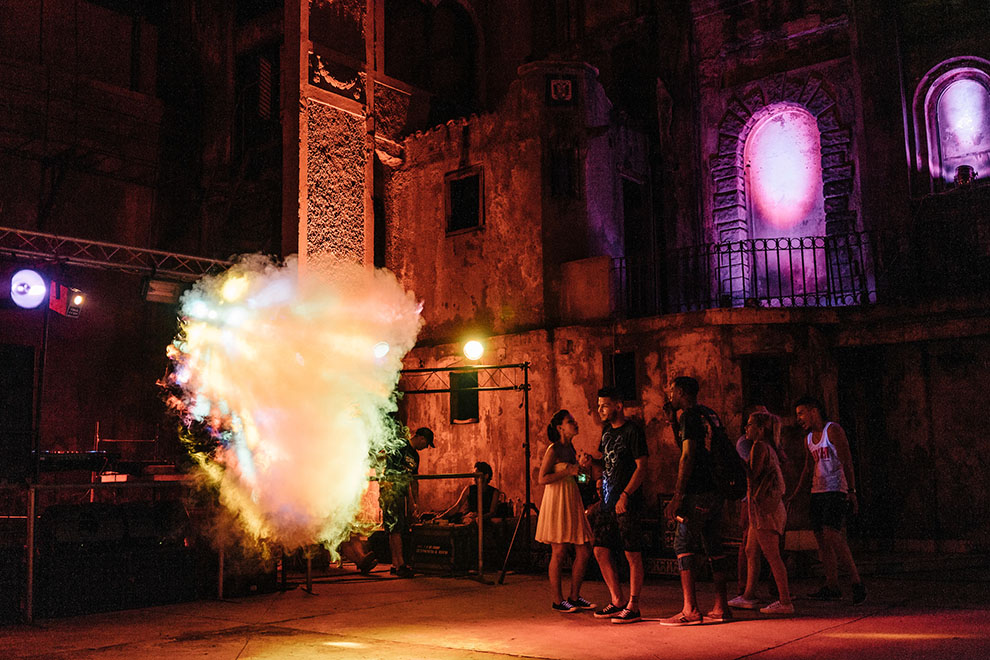
A cloud from a smoke machine hangs in the air during Fiesta Unica, a secret underground party that occurs once a month in Havana and is only known by word of mouth.
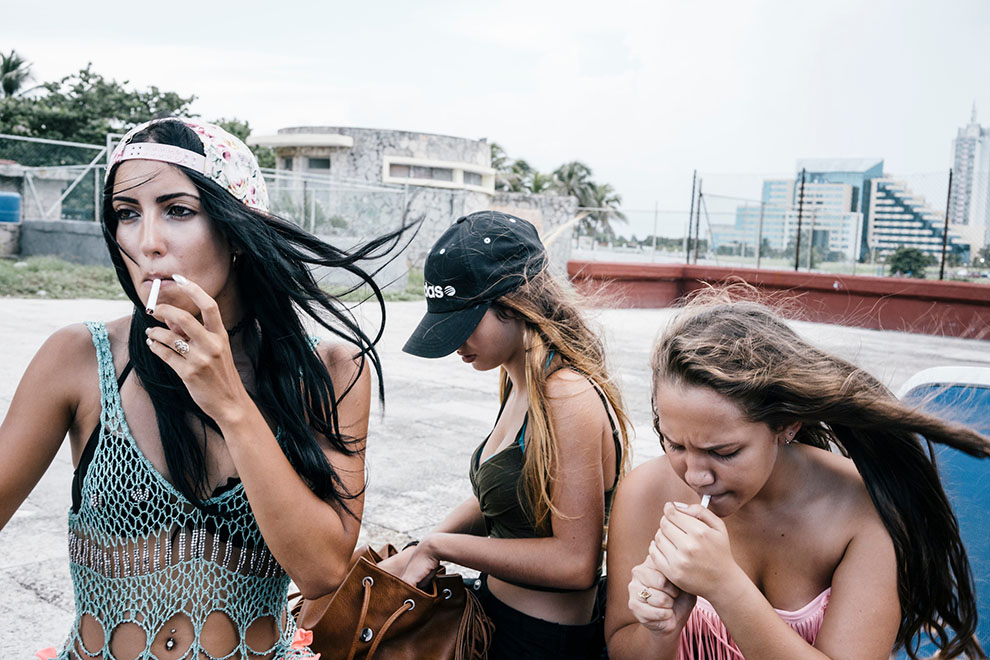
Cuban teens have a smoke during a pool party at Miramar Chateau, a hotel near the beach in Havana.

Marina Alfonso, 21, is a recent graduate of the University of Havana, where she majored in history. She thinks the youth have been leading the country when it comes to embracing new possibilities. “We used to have the same patterns in life, but they don’t work anymore,” she says. “We’re living in the utopia of the moment right now. But can we have the best of both worlds?”
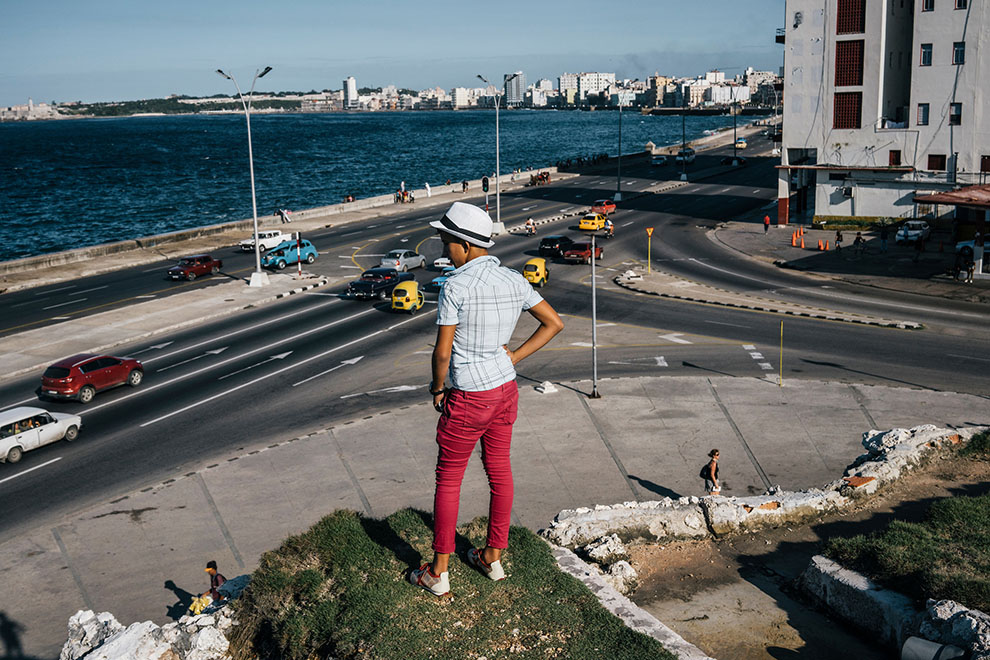
Standing on top of this rock wall overlooking the Malecón at the Hotel Nacional de Cuba, a hotel and area reserved for tourists, typically invites security and a prompt ejection. These are everyday small acts of defiance.

